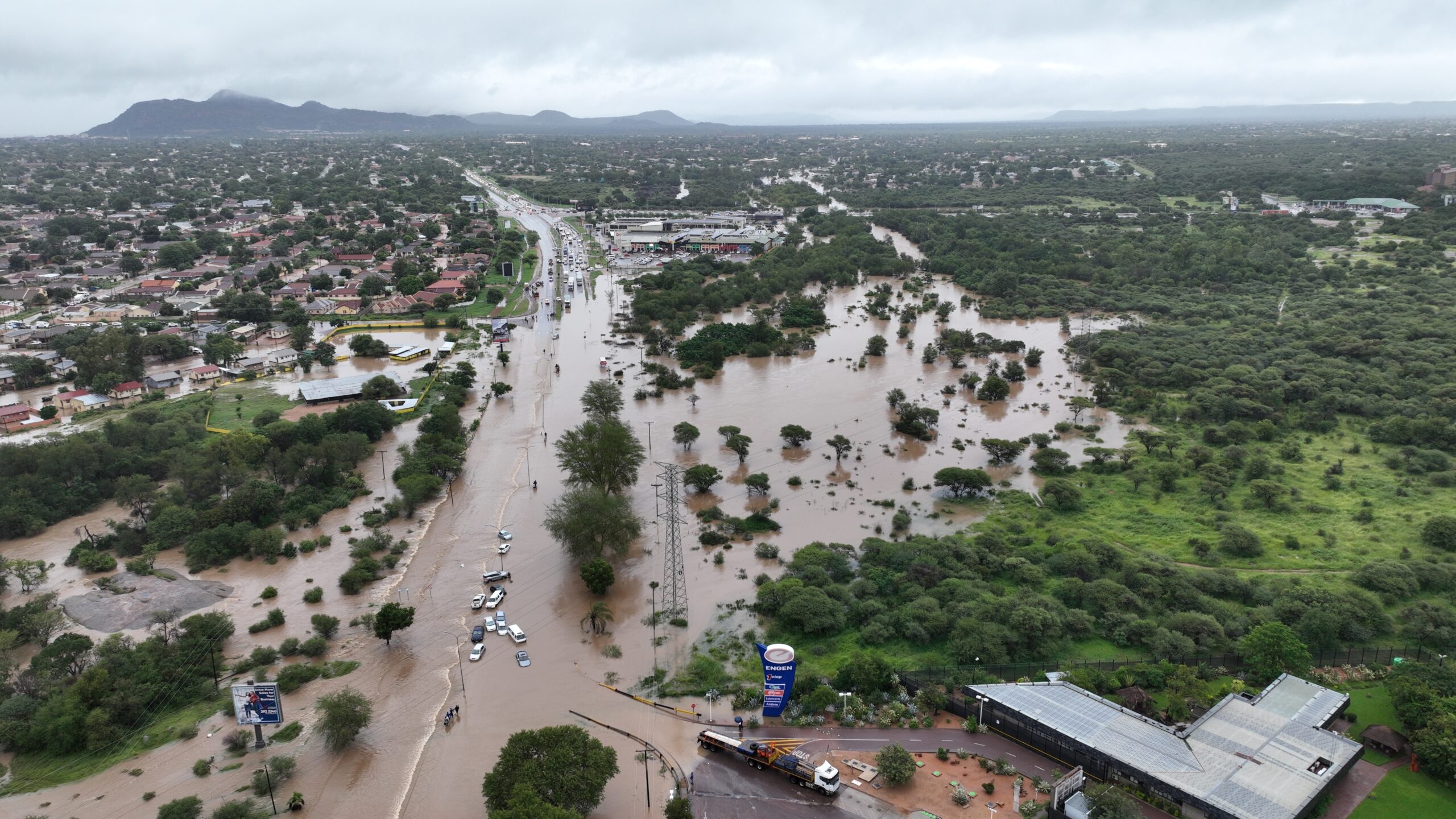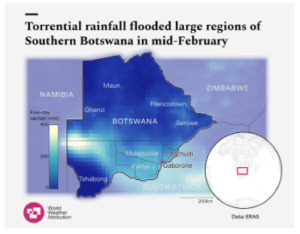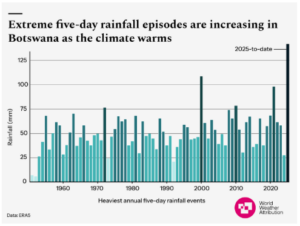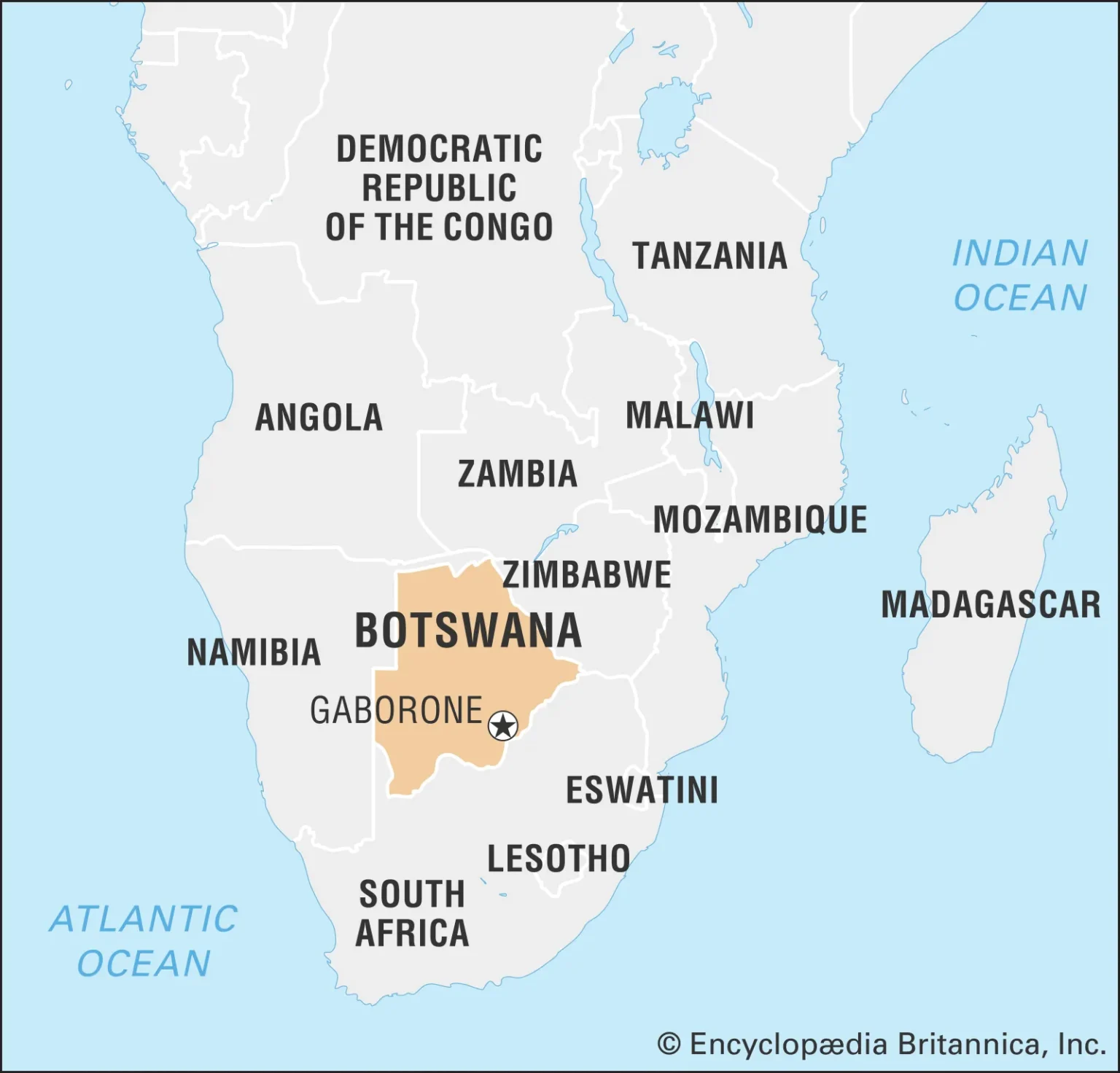Skip to main content

In mid-February 2025, the southern regions of Botswana and eastern South Africa experienced an intense deluge, resulting in widespread flooding. The disaster led to at least 31 fatalities, including 22 in KwaZulu-Natal, reaching Durban, and a minimum of nine in Botswana’s capital, Gaborone-among them six children under the age of ten (Mhlophe-Gumede, 2025). Additionally, approximately 5,000 residents were displaced from their homes. The heavy rains from February 16 to 20 caused the border between Botswana and South Africa to become impassable, disrupted major entry points into South Africa, temporarily shut down all government schools in Botswana, and created chaos on the roads. Many communities were cut off, leaving residents stranded and emergency services overwhelmed as they responded to the crisis.
To determine whether anthropogenic climate change influenced the likelihood and severity of this extreme rainfall event, a team of scientists from Botswana, South Africa, Denmark, Mexico, Austria, Sweden, the Netherlands, the United States, and the United Kingdom analyzed the event, focusing on the five-day maximum rainfall in the most affected region (see Figure 1). Their research aimed to understand how human activities may have altered the probability of such events and to evaluate the roles of vulnerability and exposure in shaping the impacts.


Key Insights from the Study
- Urban Flooding Is a Persistent Challenge: Throughout the rainy season, Gaborone and other urban centers frequently experience flooding. Intense rainfall often overwhelms drainage systems, leading to significant urban flooding. The city’s infrastructure has struggled to keep pace with rapid population growth and urban expansion, especially in low-lying zones that are particularly vulnerable to severe flooding events.
- Historical Rarity of Such Events: Even under current climate conditions, which have warmed by approximately 1.3°C since pre-industrial times, the extreme five-day rainfall event observed in February 2025 is considered rare-estimated to occur once every 10 to 200 years, depending on the data source. Using a 50-year statistical framework, the event’s return period is roughly 40 years, indicating a 2-3% chance of its occurrence in any given year.
- Climate Change’s Role in Increasing Event Likelihood: Analyzing long-term climate records reveals a trend consistent with global warming. The frequency and intensity of such heavy rainfall events appear to have increased over recent decades, with the 2025 event being significantly more probable in a warmer climate. Extrapolations suggest that a 1.3°C cooling would reduce the likelihood of such events by about 60%, highlighting the influence of rising temperatures on extreme rainfall patterns.
- Modeling Climate Impact and Uncertainty: Climate models over the region show mixed results-some project a substantial rise in the frequency and severity of intense rainfall, aligning with observational data, while others indicate no change or even a decrease. This variability stems from the models’ differing sensitivities and the natural variability inherent in climate systems, making it challenging to precisely quantify the human contribution to this specific event.
- Future Warming and the Amplification of Extreme Events: Under a scenario where global temperatures increase by approximately 2.6°C relative to pre-industrial levels, most climate models predict a further escalation in the magnitude and frequency of five-day heavy rainfall events. This suggests that climate change could lead to more frequent and intense flooding in the region as warming progresses.
- Overall Conclusions: Combining the strong historical evidence of increasing heavy rainfall, the physics of warmer air holding more moisture, and model projections indicating future intensification, it is clear that human-induced climate change has likely amplified the risk of flooding in southern Botswana. However, quantifying the exact extent remains complex due to natural variability and model uncertainties.
- Impact of Infrastructure and Urban Planning: Most damages from the February floods stemmed from urban flooding, which historically occurs even during less extreme rainfall. The extent of destruction was exacerbated by infrastructure not designed to withstand such intense events. Roads, drainage systems, and dams were overwhelmed, and essential services like health clinics faced severe disruptions, especially in areas like Molapowabojang and Kanye.
- Strategies for Building Resilience: Efforts are underway to enhance flood resilience through improved drainage networks, land-use regulations, and disaster preparedness initiatives. Expanding drainage capacity, implementing zoning laws to prevent development in high-risk zones, and upgrading infrastructure to cope with future climate challenges are critical steps. Integrating comprehensive multi-hazard assessments into urban planning, along with advanced early warning systems, can significantly bolster communities’ ability to withstand future extreme weather events.

